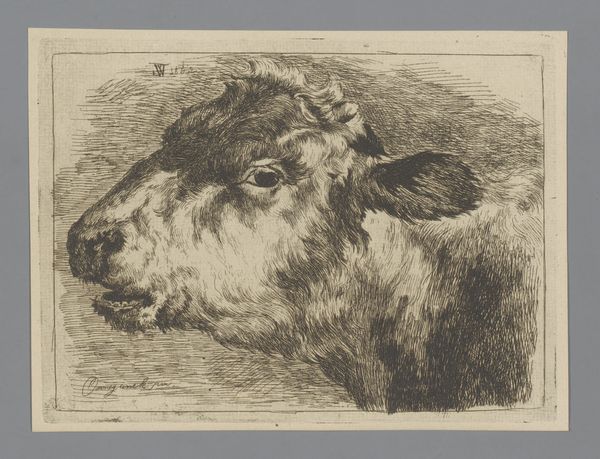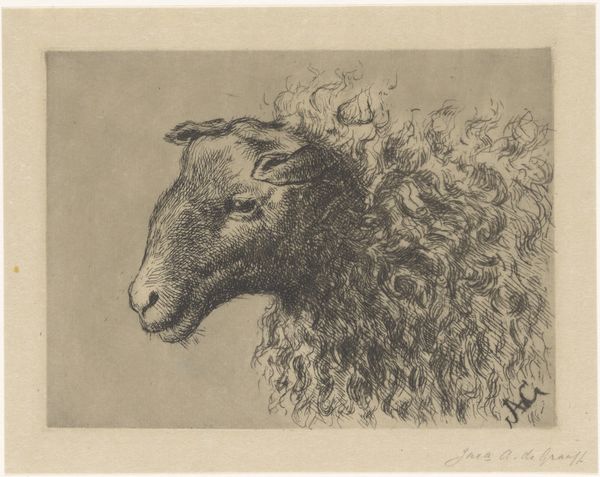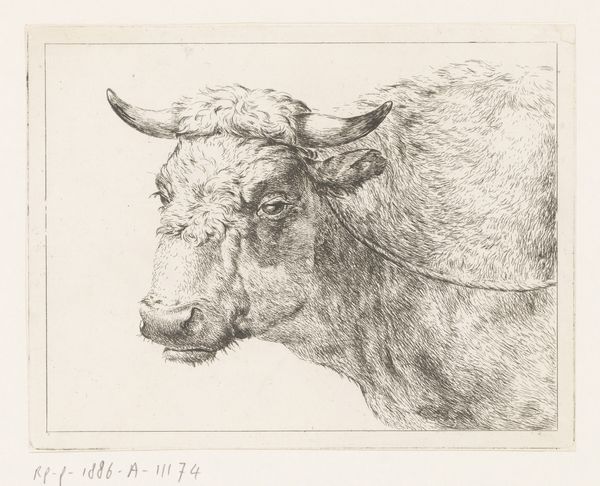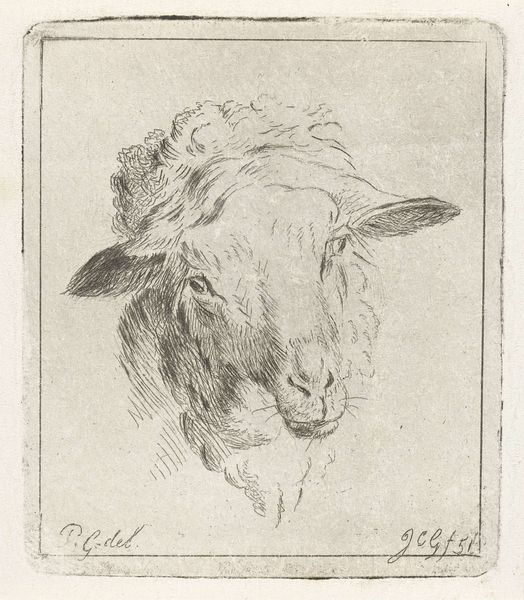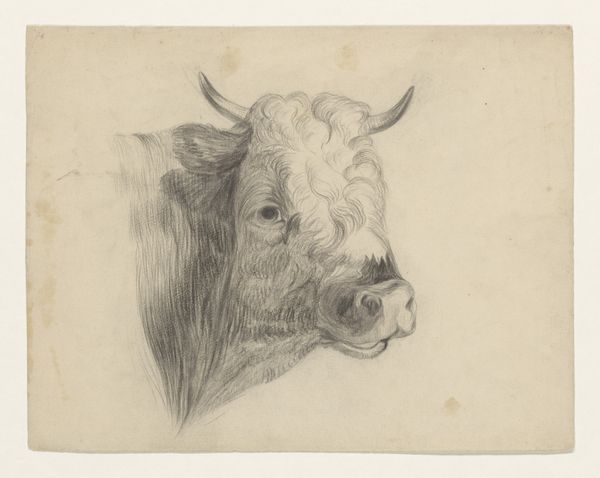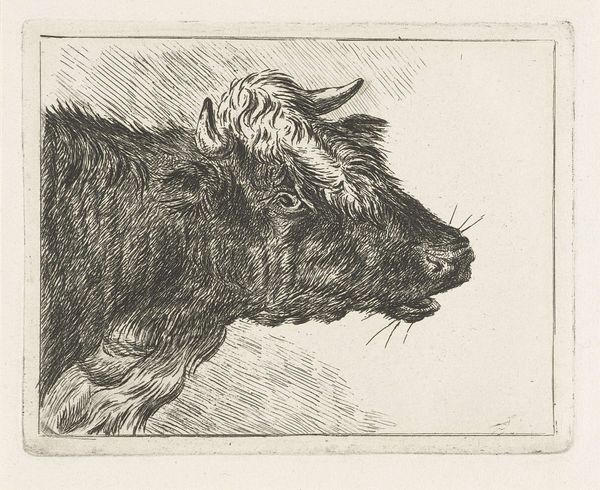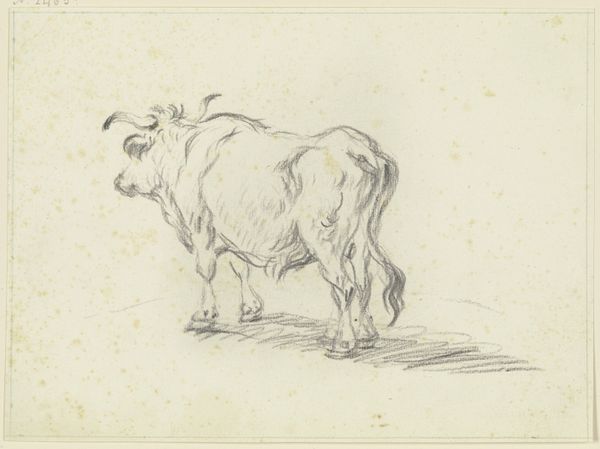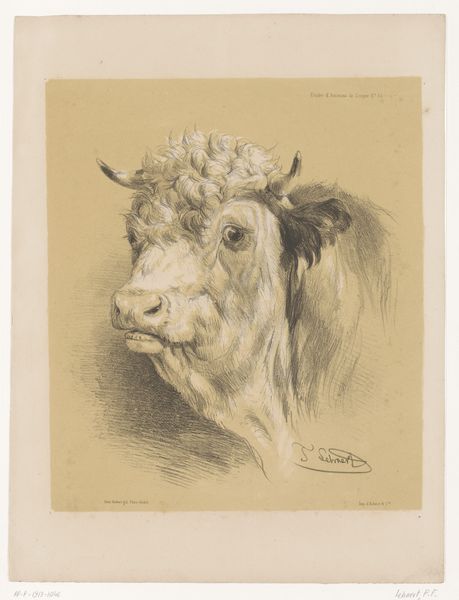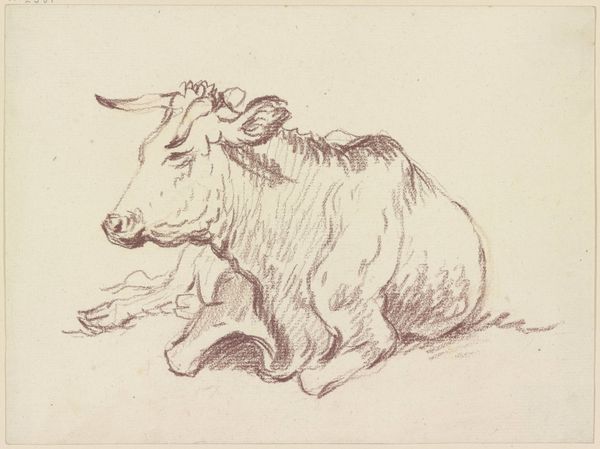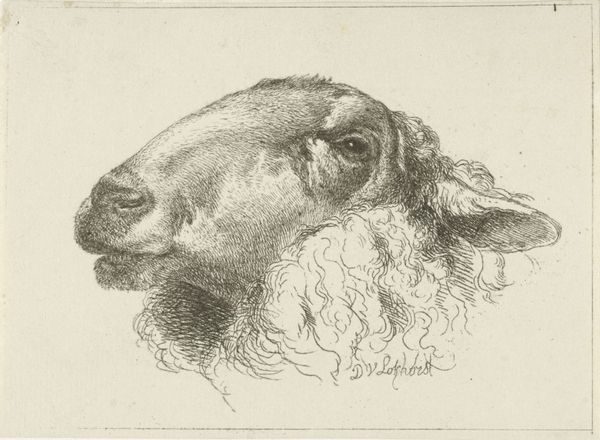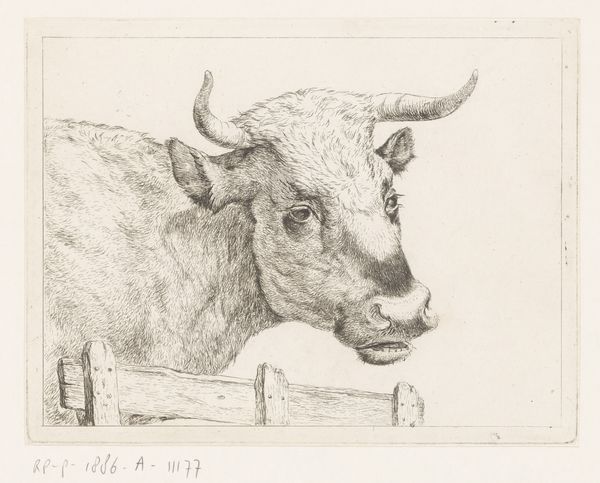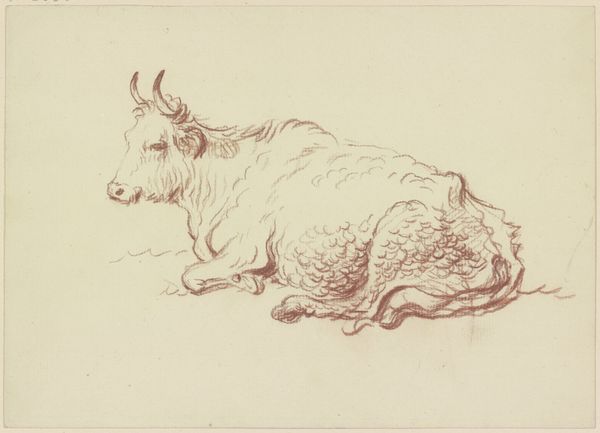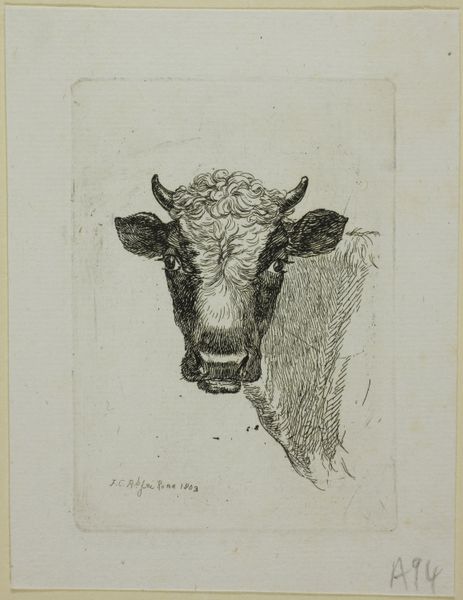
drawing, paper, ink
#
portrait
#
pencil drawn
#
drawing
#
amateur sketch
#
light pencil work
#
pencil sketch
#
paper
#
personal sketchbook
#
ink
#
pencil drawing
#
sketchbook drawing
#
pencil work
#
watercolour illustration
#
sketchbook art
#
realism
Dimensions: height 118 mm, width 158 mm
Copyright: Rijks Museum: Open Domain
This is Willem Linnig the Second’s etching of a calf’s head, made sometime in the mid-19th century. Linnig was part of a family of artists in Belgium, a country undergoing rapid modernization at the time. In the 19th century, class divisions were stark, and rural life was often romanticized even as it was disappearing. This etching, with its detailed rendering of the animal's face, can be viewed through the lens of these societal changes. Is it simply a study of animal anatomy, or does it speak to broader themes of nature, agriculture, and our relationship with the animal world? The calf’s head, with its soft eye and detailed fur, evokes a sense of vulnerability and intimacy. Linnig captures a fleeting moment, inviting us to consider our connection to the creatures that sustain us. Does the artwork maintain traditional representations of pastoral life, or does it hint at the costs of progress? This etching encourages us to reflect on the emotional and ethical dimensions of our relationship with nature.
Comments
No comments
Be the first to comment and join the conversation on the ultimate creative platform.
